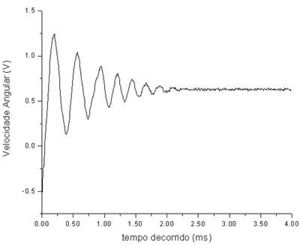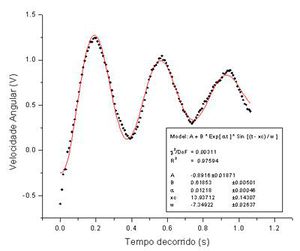Difference between revisions of "Damped Pendulum Oscillations"
Jump to navigation
Jump to search
(Texto inicial) |
(Tradução das legendas.) |
||
| Line 8: | Line 8: | ||
=Protocol= | =Protocol= | ||
| − | [[File:pamortecido-graph1.jpg|thumb| | + | [[File:pamortecido-graph1.jpg|thumb|Figure 1: Data without any active friction, maximum samples and maximum sample rate.]] |
| − | [[File:pamortecido-graph2.jpg|thumb| | + | [[File:pamortecido-graph2.jpg|thumb|Figure 2: Fitting of a damped sine to the three first periods. The friction constant is, in this case, \(0.0122 s^{-1} \).]] |
Under construction. | Under construction. | ||
Revision as of 23:11, 24 May 2012
Description of the Experiment
The purpose of this experiment is to determine the friction constant in a oscillating round motion.
Experimental Apparatus
The pendulum is launched, and the user can choose the length of the rod and the initial angle. The pendulum's rod is attached to the head of a salvaged hard-drive. This allows a measuring of the pendulum's angular velocity, as a function of time.
Protocol
Under construction.
Advanced Protocol
The oscillation period decreases, even though the first three do not show this. Why? Find the mathematical expression that explains this behavior and fit it to the experimental data. Change the friction parameter and find the new friction constant.

